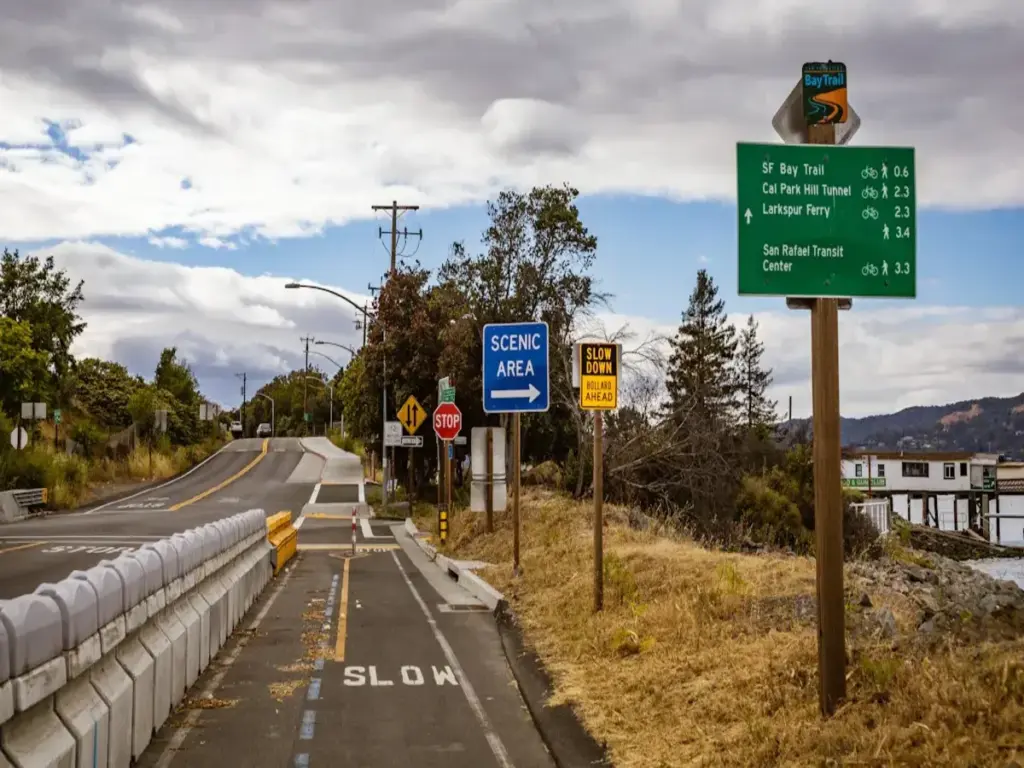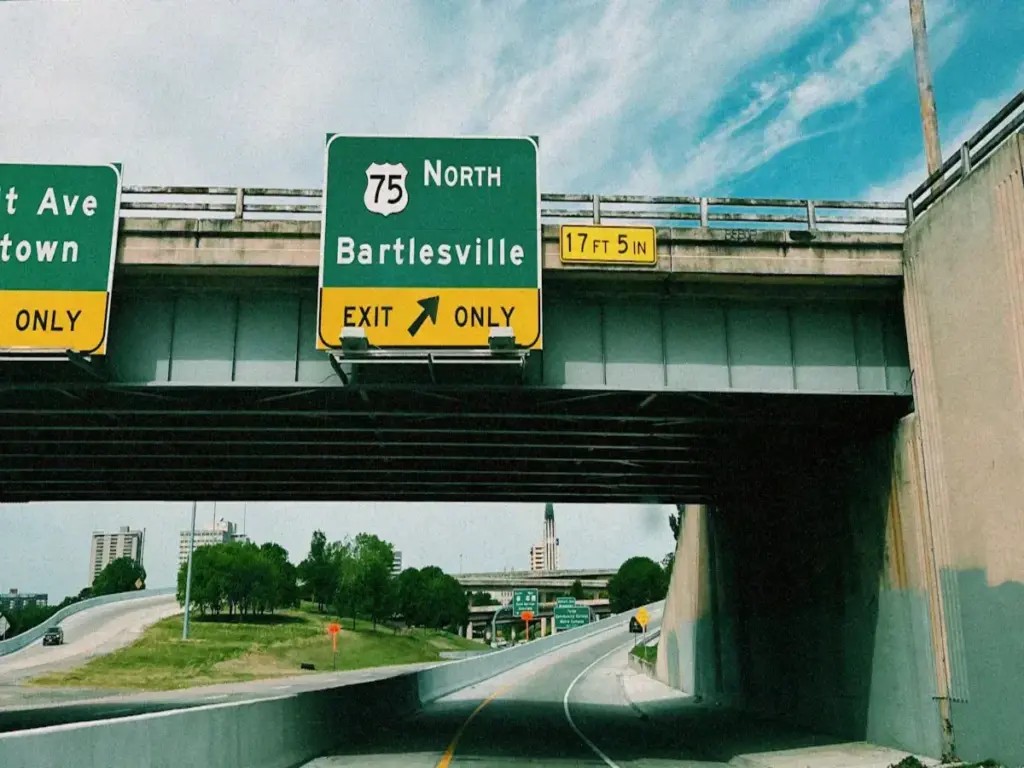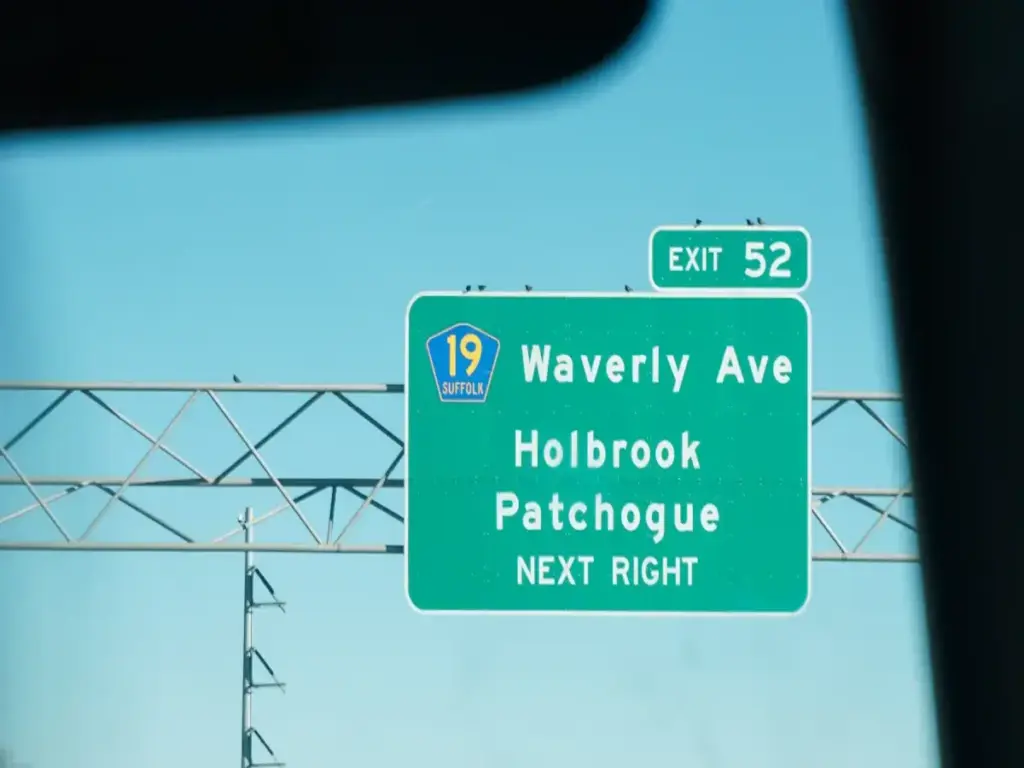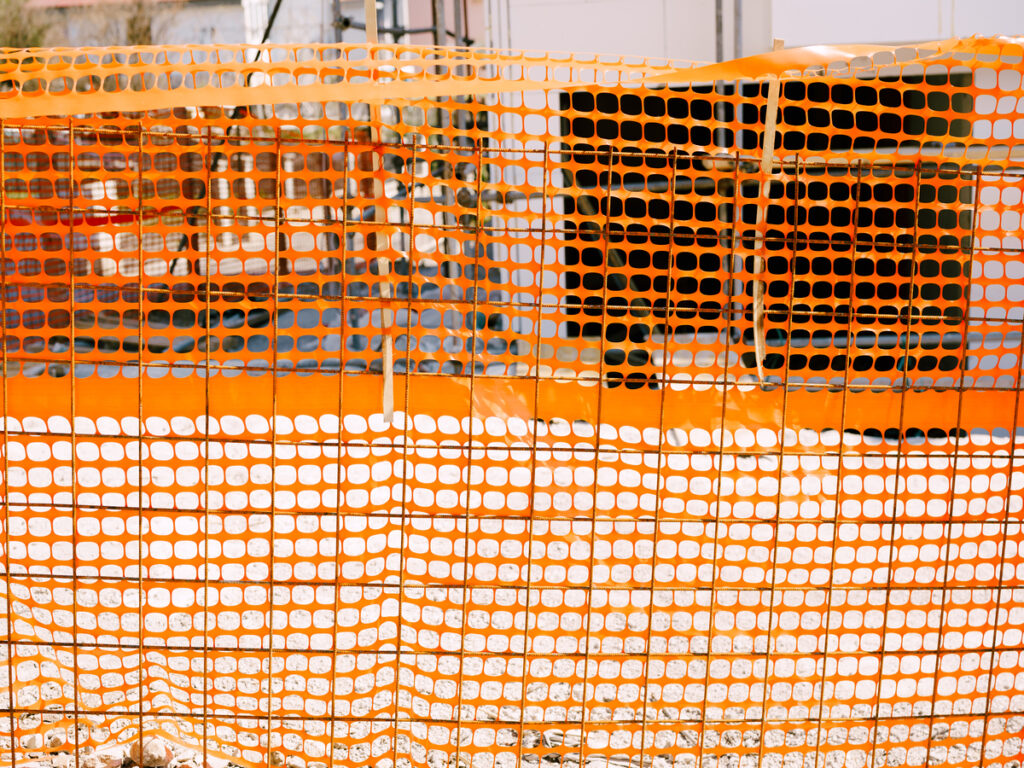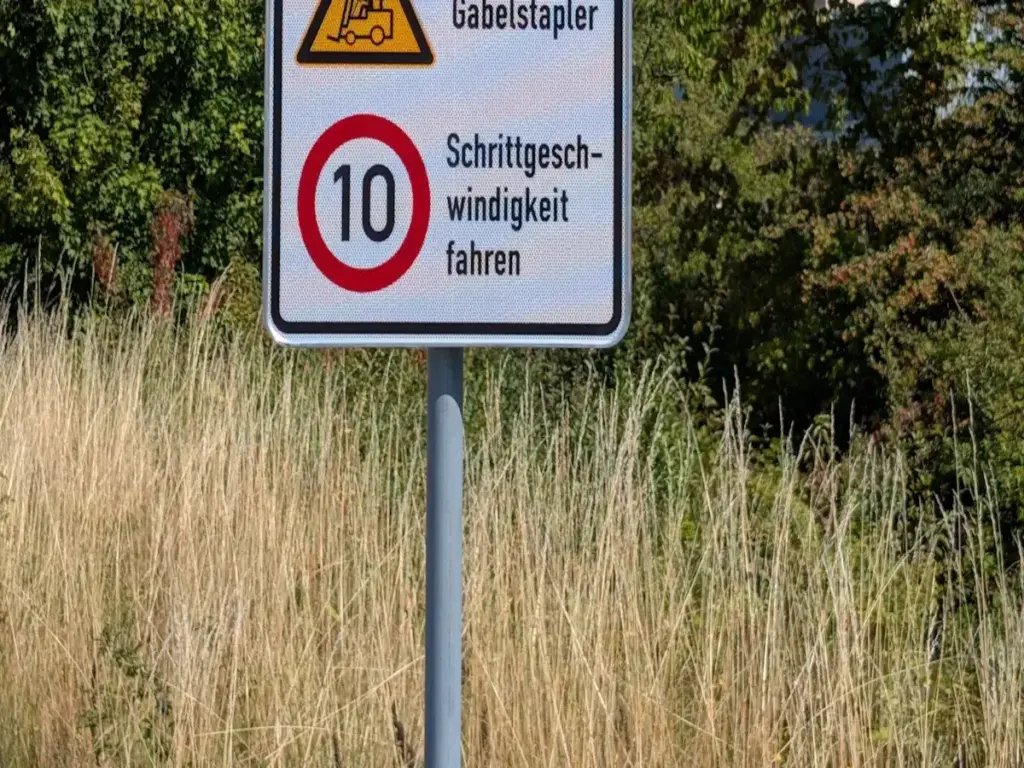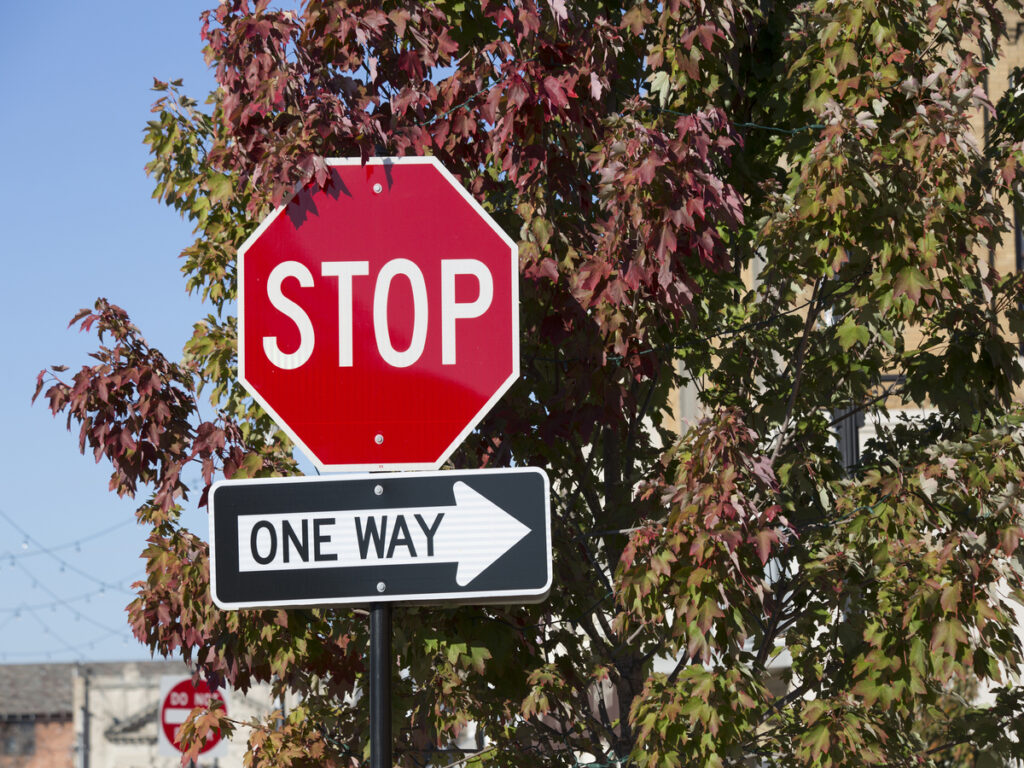
MUTCD traffic signs help keep roads safe and easy to understand. All states use MUTCD in some way, but many have extra rules or needs. 예를 들어:
- 18 states use the national MUTCD with no changes.
- 22 주, plus D.C. and Puerto Rico, 추가 규칙을 추가하십시오.
- 10 states make their own versions that still follow MUTCD.
A contractor who puts up signs in different states faces special problems. Knowing both federal and state rules stops mistakes, 사람들을 안전하게 지키십시오, and saves money by avoiding fines.
OPTRAFFIC understands the challenges contractors face when working across state lines. Our comprehensive range of 교통 표지 is compliant with both federal and state regulations, ensuring that your projects meet all safety and legal requirements. With our reliable and versatile signage solutions, you can avoid costly mistakes and fines, keeping your work on track and safe. Trust OPTRAFFIC to provide the right signs for every location, helping you navigate the complexities of multi-state compliance with ease.
주요 테이크 아웃
- MUTCD traffic signs look the same everywhere to help keep roads safe and easy to understand.
- States can change or add rules for their own needs, like weather, 언어, or road types, but they still follow MUTCD standards.
- Following both MUTCD and state rules helps stop crashes, 법적 문제, and losing federal money.
- Agencies and contractors need to check, 고치다, and update signs often so people can see them and they work well.
- Teams should work with experts and use training tools to stay current and avoid expensive mistakes.
MUTCD Traffic Signs Overview
Purpose and Scope
MUTCD traffic signs help people know the rules on roads. They also warn drivers and walkers about dangers. The main goal of the mutcd is to make roads safer for everyone. It does this by making sure signs look the same everywhere. When people see the same shapes and colors, 그들은 무엇을 해야할지 알고 있습니다. This helps people stay safe and not get confused.
To ensure consistent safety and clear communication on the road, it’s essential to understand the standards behind MUTCD traffic signs. These signs play a crucial role in guiding drivers and pedestrians, 혼란을 줄입니다, and improving overall safety. For a deeper dive into the global road safety standards, 블로그를 확인하십시오 도로 안전 부호 표준 이해: mutcd (미국), 처럼 1742 (호주), 그리고 비엔나 협약 (유럽) to learn more about how different regions implement these vital regulations.
Key points about MUTCD traffic signs:
- They use the same designs and colors.
- They show clear messages to everyone.
- They help people follow rules and stay safe.
규정 준수 요구 사항
Agencies must follow strict rules for MUTCD traffic signs. Each road sign must be easy to see in the day and at night. Workers check signs often to make sure they are clean and not blocked. If a sign is broken or old, 빨리 교체해야 해.
- Signs must reflect light at night.
- Signs need to be checked and cleaned often.
- Agencies write down when signs are put up.
- Things like trees or building stuff must not block signs.
- 일부 징후, like parking or walking signs, may not need to reflect light.
| 요구 사항 | 설명 |
|---|---|
| 후향성 | 사람들이 볼 수 있도록 표지판은 밤에도 빛나야 합니다 |
| 유지 | Signs must be clean and easy to read |
| 대사 | 깨진 간판은 빨리 교체해야 합니다 |
| 점검 | 기관은 표지판을 자주 확인해야 합니다. |
Federal Oversight
연방 고속도로 행정부, or FHWA, 확인하십시오 MUTCD traffic signs 규칙을 따르십시오. The FHWA works with states and towns to check all signs. The Federal Lands Highway Office helps with signs on federal and tribal lands. These groups set the rules and make sure people follow them.
The FHWA gives mutcd 교통 표지 the power of law and makes sure they are on all public roads.
주 규정
State Modifications
States sometimes change MUTCD traffic signs rules for their own needs. These changes help with local weather and road types. Some places have lots of fog or snow. They need signs drivers can see in bad weather. Other states have busy cities or big country roads. They change sign size or color so people see them better.
States use three main ways to handle mutcd 규칙:
- Some use the national mutcd with no changes.
- Some add a state supplement to the national mutcd.
- Some make their own manual based on the mutcd.
These choices help states keep roads safe. They still follow national standards.
상태 예
Many states have their own rules for traffic signs. 다음은 몇 가지 예입니다:
- 캘리포니아 uses signs in two languages in some places. This helps more people understand the rules.
- 뉴욕 has special rules for school zones. The state uses extra signs to protect kids near schools. New York also has laws for work zones and speed limits.
- 텍사스 makes signs bigger and uses bright colors in country areas. 이것은 운전자가 멀리서 표지판을 볼 수 있도록 도와줍니다, 밤에도.
- 플로리다 uses special materials for signs in flood areas. The state also has rules for sign lights and fines for breaking traffic laws.
These examples show how states change MUTCD traffic signs for their own needs.
로컬 변형
Cities and counties may change sign rules for their own needs. They might add signs for events or use different materials in parks. 주 교통부 check new mutcd editions and make changes in two years. They often keep old rules while working on updates. This helps drivers stay safe during changes.
States balance local needs with national rules. This keeps roads safe and easy to use.
주요 차이점
디자인과 외관

States and cities often change how traffic signs look. Some places use bigger letters or brighter colors. Others add symbols or more languages. 예를 들어, California uses signs in two languages for Spanish speakers. Texas puts up larger signs with strong colors on country roads. These changes help drivers see and understand signs better.
| 상태 | Unique Design Feature | Reason for Change |
|---|---|---|
| 캘리포니아 | 이중 언어 표지판 | Diverse population |
| 텍사스 | 더 크게, high-contrast signs | Rural visibility |
| 플로리다 | 방수 소재 | Flood-prone areas |
| 뉴욕 | Extra school zone signs | Child safety |
팁: Drivers should notice these changes when visiting new states. Local rules can change how signs look and what they mean.
배치 및 사용
The MUTCD gives rules for where to put traffic signs. States can add their own rules for weather, 도로, and traffic. MUTCD traffic signs must be a certain size and placed in the right spot. 예를 들어, stop signs must be at least 30 inches wide on most roads. 바쁜 교차로에서, stop signs must be 36 인치 너비. The MUTCD says stop signs should be 2 feet from the curb in cities. 시골 도로에서, 그들은해야합니다 6 feet from the edge.
States may want signs farther from the road or bigger in foggy or snowy places. They can add extra signs for events or local dangers. These changes help keep drivers safe in different places.
메모: States must follow MUTCD rules but can make them stricter for their needs.
Legal Authority
Federal law lets the 우리를. 교통부 and FHWA set national rules for traffic signs. The MUTCD is the main guide for all states. States must use a manual that meets or goes beyond MUTCD rules. They can use the national MUTCD, add state rules, or make their own manual that matches MUTCD.
Congress made laws that say signs must have features like 후향성 for night. The FHWA checks if states follow these rules and can set deadlines for updates. 국가가 규칙을 따르지 않는 경우, it might lose federal money for roads. States can also face legal trouble if signs do not meet safety rules, like lawsuits after crashes.
알리다: States need to keep their traffic sign rules current to avoid losing money and legal problems.
준수가 중요한 이유
Legal Implications
Following traffic sign rules is very important. States must use MUTCD standards or their own approved rules. The Federal Highway Administration gives deadlines for updates and checks if rules are followed. If a contractor or agency does not follow these rules, 문제가 발생할 수 있습니다:
- Courts may blame them if a crash happens and a lawsuit says signs were missing or wrong.
- Lawsuits often ask if the sign met MUTCD rules.
- Not following rules can lead to lawsuits for carelessness.
- States can lose federal road money if they ignore MUTCD standards.
- Good engineering judgment matters. Mistakes in picking or placing signs can be used in court.
- The MUTCD is a legal standard. Most enforcement happens through lawsuits, not direct fines.
메모: Agencies must follow new MUTCD rule dates. Missing these dates can cause legal and money problems.
안전 영향
Good traffic sign rules make roads safer for everyone. Studies show that when signs follow MUTCD and state rules, drivers act better. 예를 들어:
- Dynamic speed display signs in school zones lower speeds by about 9 MPH.
- 다른 곳에서, speed drops by 5 mph 이하.
- Fast drivers slow down more, 때때로 0.7 에게 3 MPH.
- The chance of tickets makes drivers watch signs more.
- 도로 유형, traffic amount, and sign visibility change how well signs work.
These facts show that good signs help stop crashes and save lives.
팁: Clear signs help drivers make safe choices and lower accident risks.
책임 위험
Not following traffic sign rules brings big risks. If a crash happens and signs do not meet standards, insurance may not pay. Agencies or contractors may lose money. Lawsuits can say bad signs caused injuries or damage. Federal-aid projects need MUTCD compliance, so missing standards can block funding.
| 위험 유형 | 설명 |
|---|---|
| Legal Liability | Lawsuits for carelessness or bad signage |
| Financial Loss | Loss of insurance or federal road money |
| 평판 손상 | People may trust agencies less after crashes |
알리다: Following rules helps agencies avoid lawsuits, money loss, and reputation damage.
규정 준수 보장
Identifying Standards
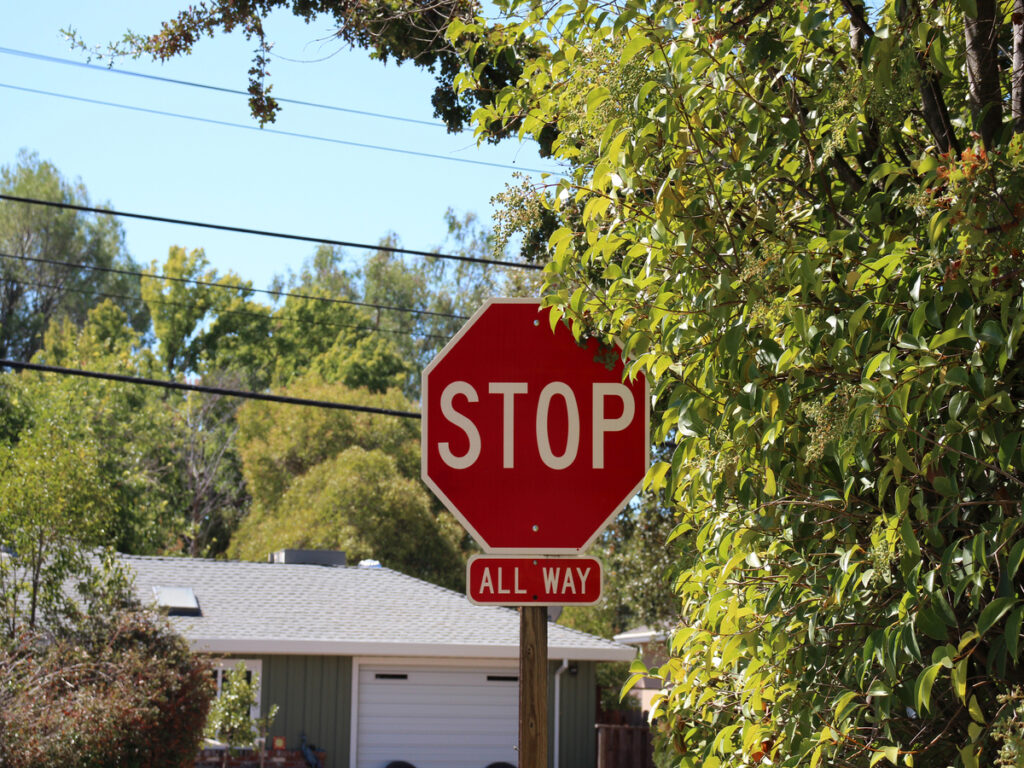
Agencies and contractors must know which rules apply to each project. They can follow these steps to identify if MUTCD traffic signs or state-specific rules govern a sign:
- Check if the state uses the MUTCD as its main rulebook.
- See if the state adds its own rules or changes to the MUTCD.
- Look for any state supplements or special manuals.
- Make sure state changes do not break federal MUTCD rules.
- Contact the state Department of Transportation or local traffic office for help.
Knowing the right standard helps teams avoid mistakes and keeps roads safe for everyone.
Resolving Conflicts
때때로, federal and state rules do not match. Teams must find a way to follow both. 그들은 할 수 있습니다:
- Work with local and state agencies to understand the rules.
- Use technology, like automated monitoring tools, to track changes in laws.
- Hold meetings with experts to solve problems quickly.
Collaboration between local leaders and state agencies helps everyone stay on the same page. This teamwork makes sure MUTCD traffic signs and local signs meet all rules.
계속 업데이트
Rules for traffic signs change often. Agencies need to keep up with new laws and best practices. 그들은 할 수 있습니다:
- Do regular audits to check if signs follow the latest rules.
- Train workers on new standards and updates.
- Use digital tools to get alerts about rule changes.
- Keep good records of audits and sign changes.
- Ask experts for advice when needed.
Regular training and audits help teams spot problems early and fix them fast.
Professional training teaches workers how to design, 설치하다, and care for signs. This training covers both national and state rules. 기술, like digital signs and real-time alerts, helps agencies respond to changes quickly and keep roads safe.
일반적인 함정
Overlooking State Rules
Many agencies and contractors look only at MUTCD standards. They sometimes miss that states can have extra rules or changes. This mistake can cause signs that do not follow the law. It can also lead to legal trouble. In Pennsylvania, small towns may not have trained engineers. They might not know about new rules. They may not check roads for curve safety.
메모: Cities and towns have problems like not enough money, tricky road shapes, and needing signs in more than one language. These things make it hard to follow both federal and state rules.
A simple checklist helps teams remember to check both MUTCD and state rules before putting up any sign.
Incorrect Placement
Putting signs in the wrong place confuses drivers and can cause crashes. 연구에 대한 연구 40% of wrong-way crashes happen because signs are unclear or not in the right spot. Some reasons are:
- Signs are hidden or not enough signs
- Signs are too small or not bright
- Intersections or ramps are hard to understand
- Road markings are faded or missing
밤, 나쁜 날씨, and distracted drivers make these problems worse. Roads with many lanes or exits can confuse people even more. Drivers who are not alert have a harder time seeing signs. This makes wrong-way crashes more likely.
팁: Teams should use signs that are easy to see, 밝은, and in the right place to help drivers stay safe.
Outdated Signs
Old traffic signs can be very dangerous. Drivers may not understand old signs or may react too slowly, especially in fog or at night. This can cause worse crashes and make people stop in the wrong place. The table below shows some important facts:
| 측면 | 증거 요약 |
|---|---|
| Risks of outdated traffic signs | Drivers often guess wrong at crossings, 그래서 55% run flashing red lights; slow reactions and worse crashes, especially when it is hard to see |
| Impact of improved signs | Better signs and markings help drivers see signals sooner and stop more often |
| Frequency of relevant traffic signs | There are over 200,000 grade crossings in the U.S., so many signs need to be checked often |
Checking and updating signs often keeps them clear and easy to see. Training and taking care of signs helps stop accidents from old signs.
Knowing MUTCD and state traffic sign rules helps everyone stay safe. It also helps agencies and contractors avoid getting into legal trouble. Doing regular checks and teaching workers builds trust with the public. Working with experts makes sure everyone follows the rules.
- Agencies need to use signs that shine at night. They should pick easy-to-read fonts. Signs must be put in the right spot.
- Services like LCPtracker and Veriforce give tools for following rules and teaching workers.
| 의지 | Key Functions |
|---|---|
| LCPtracker | Helps track rule-following and reports |
| Veriforce | Handles risk, teaches, and checks workers |
Ask a compliance expert or use guides to help make traffic sign projects safe and legal.
FAQ
mutcd는 무엇입니까??
The MUTCD stands for Manual on Uniform Traffic Control Devices. It sets rules for traffic signs in the United States. Every state uses it to help drivers and walkers stay safe.
Why do some states change MUTCD rules?
States change MUTCD rules to fit local needs. 날씨, 언어, and road types can make states use bigger signs, brighter colors, or more languages.
How can someone check if a sign follows state rules?
A person can contact the state Department of Transportation. They can also look at the state’s traffic sign manual or ask local traffic offices for help.
What happens if a sign does not meet MUTCD or state standards?
Agencies may face lawsuits or lose federal road money. 운전자는 혼란 스러울 수 있습니다, and crashes can happen. Keeping signs up to date helps everyone stay safe.

